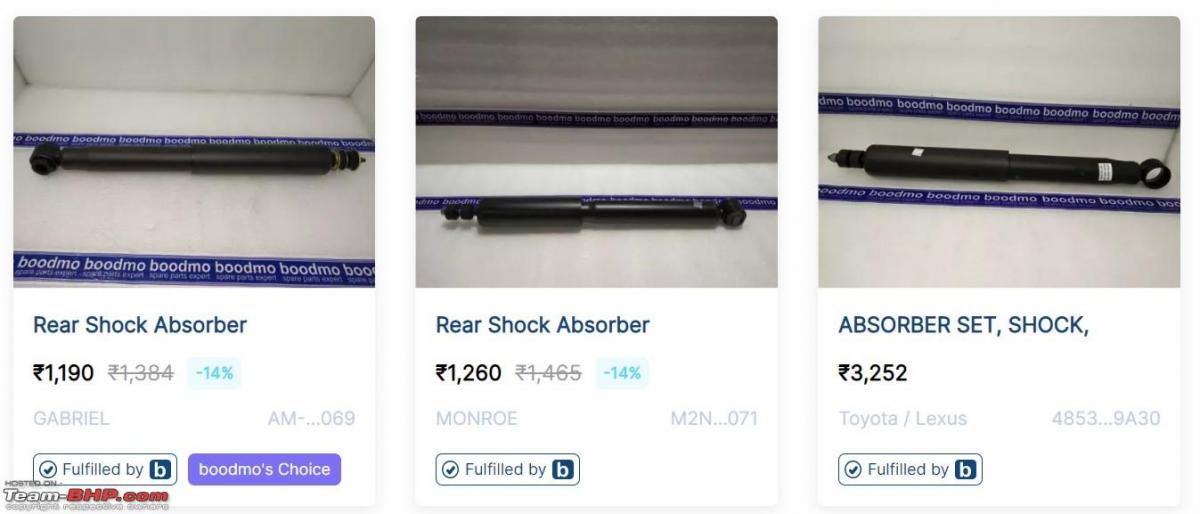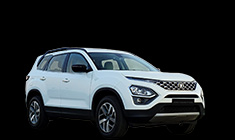News
Bought a used Toyota Innova & found its rear shock absorber is leaking
The car has done 1.37 lakh km and I am not sure whether the shock absorbers have ever been replaced or not.
BHPian shrinz.vivek recently shared this with other enthusiasts.
Today, during my routine under body peek, I found RR LH shock absorber leaking oil. It's been probably like that for a few days.
My Innova is a 2011 model with 1,37,000 km on the odo. Since I bought it pre-owned recently I'm not sure if the shocks were replaced before.
I called up a few friends at Viva Toyota and at aftermarket spares shops and realized that Toyota OE part is 3 times more expensive than aftermarket parts from Gabriel or Monroe.
Next I called Gabriel to confirm if both the parts were the same and if the price difference was only because of TOYOTA genuine spare supply routing. To my surprise, he said yes.
Also, almost all the mechanics I spoke to asked me to change both LH and RH shocks. But their justification for the same felt more like "feeling based" rather than "technical reasoning".
Hence I would seek Team BHP advice for:
- It is safe to go for aftermarket shocks instead of OE? Are they really the same? Also, aftermarket shocks mean getting it fitted in FNGs. Will they be able to torque it properly with the right tools?
- Should I change both shocks or is it ok to change only the damaged one?
Below are some images:
The leaky shock absorber
The OK shock absorber
The price difference between aftermarket and OE. The OE part title says "set", but I confirmed that is one single piece and not a set of 2.

Thanks in advance for the help!
Here's what BHPian sagarpadaki had to say about the matter:
My suggestion is to go for aftermarket only if you can confirm that Monroe/Gabriel are the OE for Toyota. Original Toyota shock absorbers are of better quality. You can get them fit at any FNG. It is a very simple job to replace the shocks. No need to worry too much about torque spec.
Since you are not sure if the shock absorbers were replaced earlier or not, replace both of them as pair.
Here's what BHPian Manoj2268 had to say about the matter:
Alternatively, you can also look for KYB shocks. KYB are OE for many Japanese Manufacturers.
Also, on the shock, there will be markings showing the name of the OE manufacturer, in addition to the Toyota logo.
Also, Boodmo shows that the prices for Monroe/Gabriel are in the range of 1500, the TKM/Lexus branded, 3.5K-ish.
Here's what BHPian aaggoswami had to say about the matter:
My 2012 Innova rear RHS shock absorber developed a leak around Diwali last year. Got Monroe as a replacement and took it to FNG for fitment. Job barely took 40-45 mins. and a new shock absorber was installed. I changed only the one which was leaking. For regular driving, it works well. Monroe is slightly stiffer than regular, this is felt more when the car is having only one or two occupants. But nothing out of the blue. You can safely go for Monroe if you are sure it's not a counterfeit.
Here's what BHPian Jeroen had to say about the matter:
Most shocks are replaced in pairs. The only way to tell is to look it up in the Manufacturer's workshop manual.
On my Mercedes and my Jaguar, they can be replaced individually according to their respective workshop manual.
I am not quite sure about the technical reason behind replacing them in pairs. Other than they tend to be of equal age, so are likely to fail shortly after one fails. There are some people that claim an old and a new shock give different dampening. I am not sure I buy into that. Modern shocks work or they don’t. There is not much in between working properly and failing when it comes to shocks.
To some extent, the same story applies to springs as well. I do find it more plausible to replace springs in pairs. I have replaced many springs and often you can measure the difference between the old and the new spring. Both inspring and loaded. So if you replace only one, your car is going to tilt ever so slightly.
But when in doubt make sure to look it up in the respective workshop manual.
Check out BHPian comments for more insights and information.

















